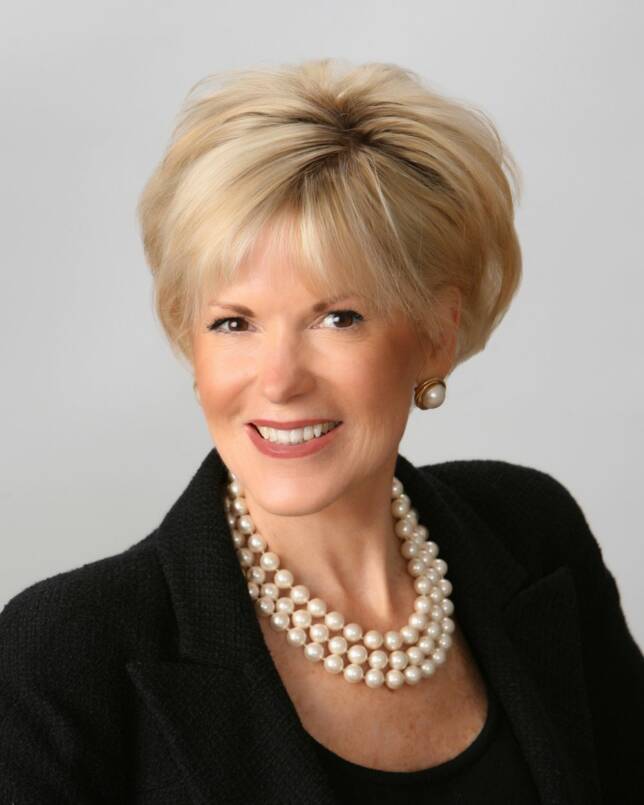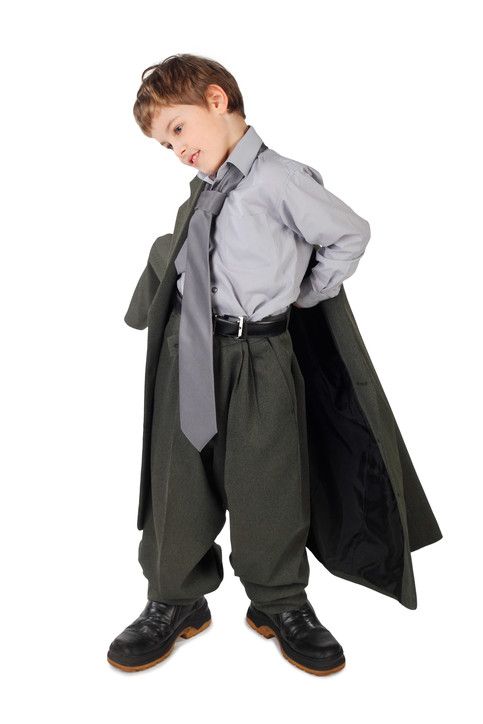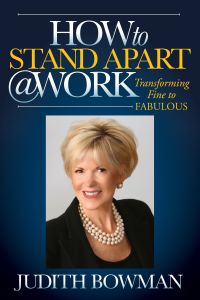How Business Attire Builds -or Breaks- Your Brand
by Judith Bowman on 07/15/19
Attire is a critical tool in business and in building your personal brand. The way you dress reflects how you feel about yourself, your life and your future. Dress to feel good about yourself and show respect for others around you. Dressing well is indicative of how you feel, how you project, how you are perceived and received; lead by example.
Professional business attire is not a nod to the latest fashion craze or a personal taste variable. Rather, professional business attire is very specific - for men and women and, foundational (pun intended.)
Socially, we dress according to how we feel that day. Professionally, we dress according to whom we plan to meet.
It is understandable that many are confused, even overwhelmed by the myriad of fashion choices and styling considerations when dressing for work. Retail stores are in business to sell the latest fashion craze and lawyers, doctors and professionals on television are actors donning enticing fashion forward attire to attract market share. You may be versatile and fashion forward with a flair for the latest trends and colors socially however, correct professional attire in business is very precise, which greatly limits confusion and makes dressing professionally the "easy A."
Women may have more room for error but a more natural advantage by virtue of the fact that they are women. "In a room of gentlemen," Karen Kaplan, CEO, Hill Holiday says, "who do you think they are going to remember, the 10th guy in the gray suit or the one woman?" Being a woman (in business) is an advantage, not a disadvantage. "In a room full of gentlemen, its easy to stand apart. Embrace what makes us different, ladies."
Quality and conservative are the rule governing professional business attire the world over. Think: Investment dressing and "Never Wrong." Colors, fragrances and accessories, critical elements of professional attire, are integral to your overall first impression and complete your professional statement. Remember, your goal in business is to establish a connection.
You want others to regard you as the quintessential professional in your field; dress the part.
The Primary Business colors - for men and women continue to be navy blue, black, charcoal gray and pinstripe in any color variation. Brown is considered taboo in business. Save your brown and eggplant suits for social affairs or to wear after you have the relationship, if at all.
Most importantly, understand what styles best flatter and complement your body type. If in doubt, enlist the assistance of a professional image consultant or personal shopper found in virtually all stores today. A proper fit is essential.Know a good tailor.
Shirts and Tops
Neutrals are best. Your top - shirt, blouse or sweater should not be too bulky or form-fitting. A crew neckline is "never wrong" and eliminates (flapping) shirt collar phobia. Sheer lace, excessive ruffles, bare backs and cleavage are taboo. Toss anything even remotely worn looking.
Neutrals are best. Your top - shirt, blouse or sweater should not be too bulky or form-fitting. A crew neckline is "never wrong" and eliminates (flapping) shirt collar phobia. Sheer lace, excessive ruffles, bare backs and cleavage are taboo. Toss anything even remotely worn looking.
Pants
The timeless traditional business suit e.g. skirt/dress is "never wrong" the world over especially in High Context Cultures such as Japan. If you feel you look better and therefore perform better in pants, the pant suit is widely acceptable for women in business today. If you elect to wear pants, a pant suit (rather than slacks and a jacket) is the best choice. The blazer look is considered more casual. Remember to button your jacket leaving the bottom open to vent.
The timeless traditional business suit e.g. skirt/dress is "never wrong" the world over especially in High Context Cultures such as Japan. If you feel you look better and therefore perform better in pants, the pant suit is widely acceptable for women in business today. If you elect to wear pants, a pant suit (rather than slacks and a jacket) is the best choice. The blazer look is considered more casual. Remember to button your jacket leaving the bottom open to vent.
Hosiery
Wearing hosiery is being "finished" and presents a polished look.Even when the temperature is 110 degrees, hosiery is appropriate for professional women in business. Choosing the right color is important. In warm summer months choose neutral shades or beige; white hosiery is reserved for nurses and is considered taboo in business.In transitional months, opt for tan. Other than neutrals, tans and beige, black opaque in cooler months is appropriate.The most common faux paswith respect to women's attire in business is wearing sheer black hosiery during the day. "Sheer" black hosiery is the formal, the most elegant and reserved for evening and formal events.
Wearing hosiery is being "finished" and presents a polished look.Even when the temperature is 110 degrees, hosiery is appropriate for professional women in business. Choosing the right color is important. In warm summer months choose neutral shades or beige; white hosiery is reserved for nurses and is considered taboo in business.In transitional months, opt for tan. Other than neutrals, tans and beige, black opaque in cooler months is appropriate.The most common faux paswith respect to women's attire in business is wearing sheer black hosiery during the day. "Sheer" black hosiery is the formal, the most elegant and reserved for evening and formal events.
Shoes
Shoes should be classic ... comfortable (!)polished, professional. The classic pump is "never wrong." Suede is considered a notch above leather and no more expensive; spectators are fabulous. Shoe taboos in business: no sling backs, open toes, stilettos or flats (except with pants); the ballet flat is acceptable for a more casual look. Sandals do not make a professional statement, no matter how you wear them. Rule: shoes should be darker than your hemline.
Shoes should be classic ... comfortable (!)polished, professional. The classic pump is "never wrong." Suede is considered a notch above leather and no more expensive; spectators are fabulous. Shoe taboos in business: no sling backs, open toes, stilettos or flats (except with pants); the ballet flat is acceptable for a more casual look. Sandals do not make a professional statement, no matter how you wear them. Rule: shoes should be darker than your hemline.
Boots
Remove boots before going into any business meeting/networking function or social event.
Remove boots before going into any business meeting/networking function or social event.
Jewelry, Fragrances,Accessories
Jewelry is an appropriate wardrobe complement that also makes a personal statement and can be a great conversation launch, which also speaks professionally to your eye to detail. The working rule is: Less is more. When in doubt, do without. Gold and pearls are still considered the most classic choices. If silver flatters your skin tone or matches your i.e. eyeglass frames or other aspects of your attire, silver would be an acceptable choice. Nothing that dings, dangles or distracts should be worn i.e. earrings, bangles or charm bracelets, etc.. While these are wonderful accessories socially, they will detract from your professional message.
Jewelry is an appropriate wardrobe complement that also makes a personal statement and can be a great conversation launch, which also speaks professionally to your eye to detail. The working rule is: Less is more. When in doubt, do without. Gold and pearls are still considered the most classic choices. If silver flatters your skin tone or matches your i.e. eyeglass frames or other aspects of your attire, silver would be an acceptable choice. Nothing that dings, dangles or distracts should be worn i.e. earrings, bangles or charm bracelets, etc.. While these are wonderful accessories socially, they will detract from your professional message.
The Scarf
A classic scarf is a timeless accessory, often a conversation launch and speaks again to your eye for detail.
A classic scarf is a timeless accessory, often a conversation launch and speaks again to your eye for detail.
Purses
Invest in a small (black) classic understated purse that you can wear over your shoulder at any business meeting, interview or networking event and forget about vs. a large bulky fashionable purse.
Invest in a small (black) classic understated purse that you can wear over your shoulder at any business meeting, interview or networking event and forget about vs. a large bulky fashionable purse.
Coats
Opt for professional colors and classic styles. Ski parkas and other sporty coats are fine for the slopes and weekends however, they will not enhance your professional image. Dark colors, a khaki beige or green conveys the appropriate level of professionalism. Rule: the length of your coat should be longer than your hemline - for women and for men. Mid-calf length is more professional than above the knee. If your coat is worn, or frayed, replace it. If it is ill-fitting, have this tailored to fit well. Make sure to maintain and dry clean regularly. The coat you wear will be visible to your clients (reception/office area) and however subliminally evaluated. Consider your overcoat, as you consider the rest of your attire.
Opt for professional colors and classic styles. Ski parkas and other sporty coats are fine for the slopes and weekends however, they will not enhance your professional image. Dark colors, a khaki beige or green conveys the appropriate level of professionalism. Rule: the length of your coat should be longer than your hemline - for women and for men. Mid-calf length is more professional than above the knee. If your coat is worn, or frayed, replace it. If it is ill-fitting, have this tailored to fit well. Make sure to maintain and dry clean regularly. The coat you wear will be visible to your clients (reception/office area) and however subliminally evaluated. Consider your overcoat, as you consider the rest of your attire.
Comments (0)







